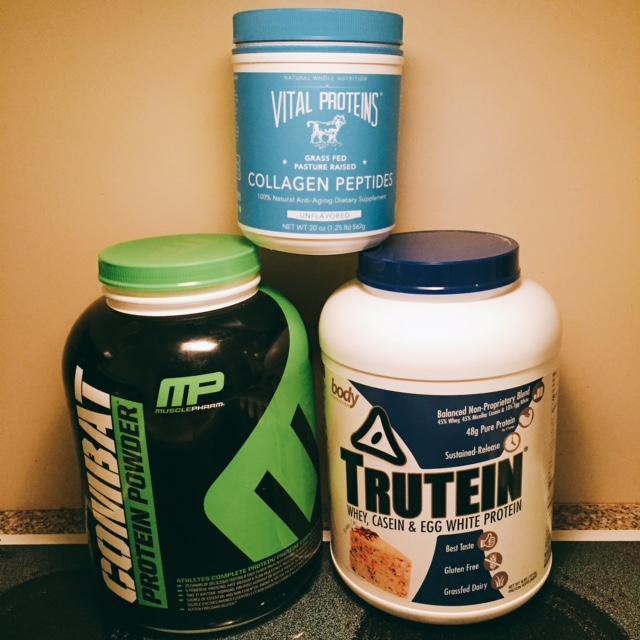Getting enough protein in your diet is important whether your health and fitness goal is to lose fat, build muscle, maintain your muscle mass or eat a balanced diet. In a caloric deficit, having a high protein diet along with resistance training will help your body recover and preserve your muscle mass (your biggest ally in burning fat, as it increases your resting metabolic rate). Having enough protein in your diet also keeps your nails and hair stay healthy and skin glowing. Feeling hungry on your low-calorie diet? Increase your protein intake; protein takes longer for your body to digest, keeping you satisfied and feeling full longer. Protein also has a high thermic effect of food; your body burns more calories digesting protein (vs. carbs and fats).
My clients often ask me what I eat on a daily basis and in particular,
how I get enough protein in my diet?
My Top 5 Convenient Protein Resources
1. Eggs
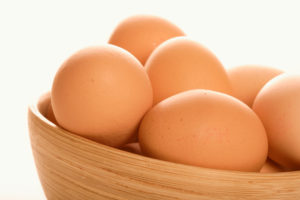 I love eggs, not only do they taste great and are a complete protein (meaning they have all of the nine essential proteins our body needs), they are versatile-you can enjoy it many different ways:
I love eggs, not only do they taste great and are a complete protein (meaning they have all of the nine essential proteins our body needs), they are versatile-you can enjoy it many different ways:
- Don’t have much time? Hard boil (or soft boil) a dozen eggs at the beginning of the week, store it in the fridge and take it to go.
- Need help increasing your veggie intake? Chop them up and throw them in your omelet.
- Scramble them with onions and more veggies
- Need to increase your protein intake but watching your fat intake? Buy a carton of egg whites (more economical and you won’t feel guilty throwing out the yolk) and make a egg white omelet. I make this often, alongside a couple of full eggs (the yolk is where the love and vitamins and nutrients are). And of course, the traditional sunny-side up, over easy, etc.
2. Edamame
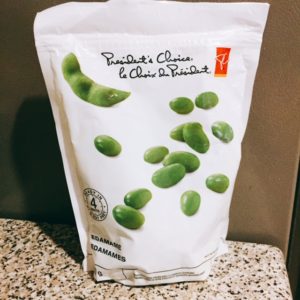 Tasty and have great macros; high in protein, high in fibre. Win-win.
Tasty and have great macros; high in protein, high in fibre. Win-win.
½ cup gives you 11g of protein and 4g of fibre. I like frozen edamame well as prepared dry roasted snack version (I enjoy Seapoint Farms). The dry roasted version is great alternative to nuts – dry roasted edamame have significantly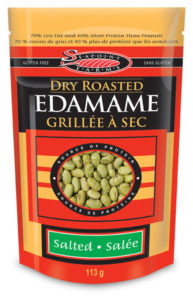 less calories, less fat and more protein than peanuts, almonds, etc., while still satisfying your crunch craving. Both the frozen and dry roasted versions are great for on-the-go; I measure ½ cup and throw it in container and eat it throughout the day.
less calories, less fat and more protein than peanuts, almonds, etc., while still satisfying your crunch craving. Both the frozen and dry roasted versions are great for on-the-go; I measure ½ cup and throw it in container and eat it throughout the day.
They are also great on top of salad to boost up your protein intake.
3. Protein Powder
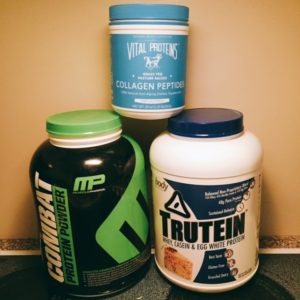 Protein powders are convenient and also very versatile – you can enjoy it in a shake post-workout or have it as a snack, you can add some in your baking to increase your protein in your baked goods; or add it to your yogurt (see #5). One scoop of a low-carb protein powder contains around 2g of fat and 5g of carb; it’s very calorie efficient and will not increase your fat intake if you are tracking your macros.
Protein powders are convenient and also very versatile – you can enjoy it in a shake post-workout or have it as a snack, you can add some in your baking to increase your protein in your baked goods; or add it to your yogurt (see #5). One scoop of a low-carb protein powder contains around 2g of fat and 5g of carb; it’s very calorie efficient and will not increase your fat intake if you are tracking your macros.
They come in an abundance of flavours, you are bound to find one that you enjoy. My favourites include birthday cake, cinnamon bun, mocha caramel and cookies & cream. For those who struggle from increasing your protein through animal meat (e.g. it gets you too full), protein powders are a great way to boost your protein intake without causing bloat.
4. Protein bars
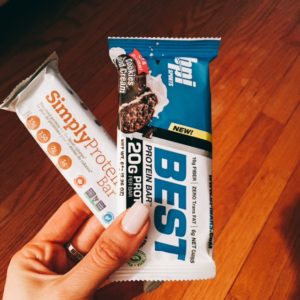
Protein bars are my favourite! Not everyone will agree, but if you find the right one it can satisfy your sweet tooth and dessert craving. A girl needs her daily chocolate – and I might as well get some protein and fibre with it too. I have one daily post-workout with my coffee; it’s one of my simple life pleasures. Be aware that many protein bars are high sugar and calorie-dense. If you are conscious of your calories, consider the following when choosing a protein bar:
- Calories –> Pick one that is appropriate within your caloric requirement; I prefer bars that are 150-250 calories
- 1:1 protein-to-carb ratio is ideal. 3:4 ratio is fine too, if the bar has high fibre
- High fibre –> Implies that the fibre:carb ratio is 1:2. Fibre lowers the net carb count as fibre is indigestible by the body
- Dietary fat –> I try to stick to bars that have 8g of fat or lessMy favourite bars at the moment that meet the aforementioned criteria are: Simply Protein Bar, bpi Sports Best Protein, Quest Bars.
5. Greek of Icelandic yogurt
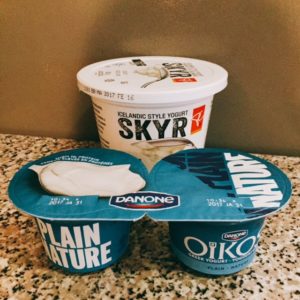 Plain Greek and Icelandic yogurt are low in sugar, low in calories and have an excellent protein-to-carb ratio. Depending on the brand, you can get anywhere from a 1:1 to a 1:3 protein-to-carb ratio. President’s Choice Icelandic Style Yogurt Skyr has 21g of protein accompanied with 8g of protein, which is amazing. I do enjoy the sour taste, but I usually add in protein powder to sweeten the taste (and because, more protein). The individual serving packages are great for on-the-go and portion control.
Plain Greek and Icelandic yogurt are low in sugar, low in calories and have an excellent protein-to-carb ratio. Depending on the brand, you can get anywhere from a 1:1 to a 1:3 protein-to-carb ratio. President’s Choice Icelandic Style Yogurt Skyr has 21g of protein accompanied with 8g of protein, which is amazing. I do enjoy the sour taste, but I usually add in protein powder to sweeten the taste (and because, more protein). The individual serving packages are great for on-the-go and portion control.
I also like to use Greek or Icelandic yogurt as a base for my vegetable dips; I add in a ton of herbs, mix it up and serve. It’s less fattening than sour cream and other traditional vegetable dips.
What are some of your favourite go-to protein snacks?
Comment below.
